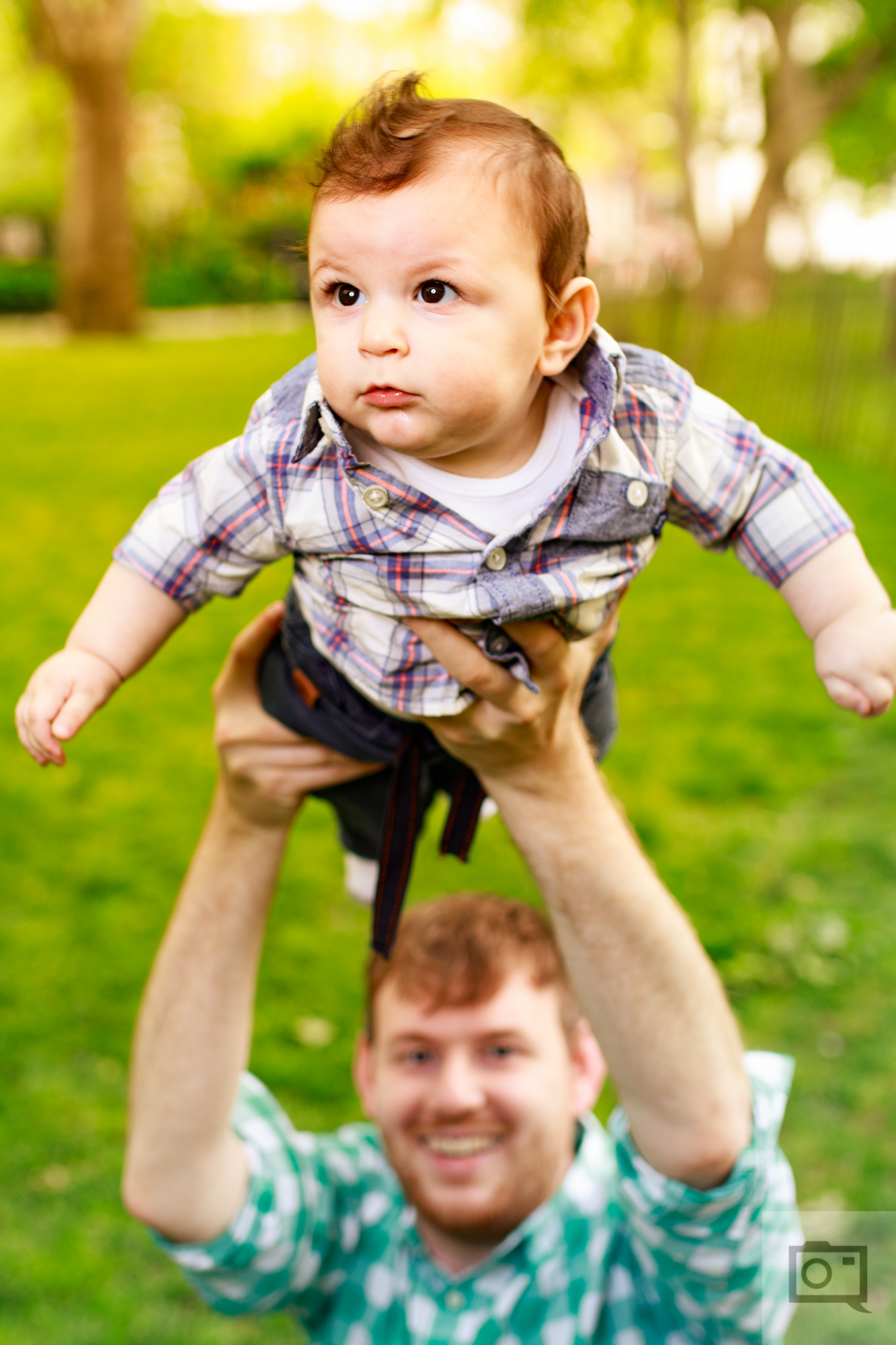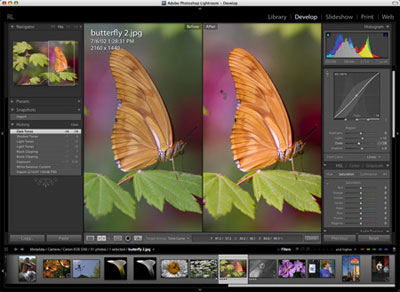

I encourage you to play with both along with the sliders to see which method works best for you!


Portions of the curve can be clicked and moved, just like the histogram. The tone curve plays a similar function, and is another way to adjust contrast and shift the highlights/shadows in a more visual fashion than the sliders. The sliders move in pre-determined increments while the histogram can be freely adjusted, so I generally prefer the histogram. The histogram, shown below, has five click-and-draggable sections (blacks, shadows, exposure, highlights, and whites) and can be used in place of these sliders in the basic section. I also brought the highlights down a tad. In our test image, I wanted to add back some of the depth/richness without the bright areas of the image getting too washed out, so I pulled the blacks down and raised the shadows to prevent it from getting too contrasty. If something bright in the image is “blown out” (AKA so bright that it has lost detail), dragging highlights or whites to the left can help recover some detail.
ADOBE LIGHTROOM TUTORIAL SKIN
Raising highlights and whites can add an extra pop of brightness to an image, and I find a little boost in both helps skin look a little more luminous. I pull my shadows and blacks down when I want to add more contrast without changing my highlights/whites, and raise them when I feel like darker areas of an image are too dark.

Moving the shadows or blacks sliders to the right makes the darker areas of your image lighter, while moving left makes them darker. The next four sliders help you make isolated adjustments to your image. I like my images bright with a little bit of punch, so I’m raising exposure and contrast significantly. Our test image is underexposed, so I’m going to raise exposure and use the contrast slider to add a little extra pop. The exposure slider brightens everything in the photo, as opposed to the highlights, shadows, whites, and blacks sliders, which isolate a portion of tones in the image. The next set of sliders are exposure and contrast, which control brightness and contrast (obviously). (You can see the sliders move on the right.) I’ve warmed it up and added a touch of magenta back in to make her skin look less blue/gray. The original image below is backlit so it’s a little too cool, and the green plants around her reflect some green onto her skin. The tint slider plays a similar role but with magenta and green. “Warming an image up” adds more yellow while “cooling an image down” by pulling the slider to the left causes it to take on more of a blue tint. The temp slider is measured in degrees of Kelvin, so a warmer or higher temperature is correlated with a higher number. Lightroom has helpfully color coded them to remind you what each does, but I encourage you to slide them back on forth on a test image to see for yourself. To fine tune white balance (or adjust it further if the dropper isn’t getting it quite right), you have the temperature and tint sliders. I think the dropper is best used to correct images with heavily skewed white balance (or at least get them back in the ballpark of correct white balance) but I prefer the sliders most of the time to make adjustments. A true black or white (meaning something that you know is definitively black or white in real life) works best, though a neutral gray can also work in a pinch. All you have to do is click on the dropper and then click on a neutral color in the image. This is a way to let Lightroom do the heavy lifting on any image where the white balance of an image is pretty far off. As I walk you through this panel, you can see how each set of sliders makes a difference in my test image.įirst up is the white balance dropper in the top left. When I edit, this is where I make most of my adjustments. It’s a great place to focus your attention especially if you’re new to editing. I think the basic panel is actually sufficient to make the majority of major changes to an image, like tweaking exposure, contrast, and saturation.
ADOBE LIGHTROOM TUTORIAL HOW TO
In this post, I’m going to go over the basic sliders in Lightroom’s Develop module to show you how they work and how to use them for editing. Welcome back to my editing series! If you haven’t read the first post, check it out for an overview of available editing softwares and a breakdown of where to find things in Lightroom.


 0 kommentar(er)
0 kommentar(er)
